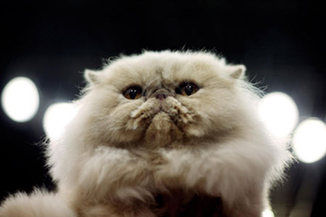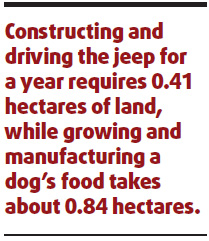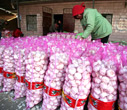Odd News
'Cats and dogs use more energy than cars'
(China Daily)
Updated: 2009-10-23 09:00
SINGAPORE: They're faithful, friendly and furry - but under their harmless, fluffy exteriors, dogs and cats, the world's most popular house pets, use up more energy resources in a year than driving a car, according to a new book.
 Joey, a Cream Persian cat, is seen at the "Meet the Breeds" exhibition in New York October 17, 2009. [Agencies] |
Calculating that the modern Fido chows through about 164 kg of meat and 95 kg of cereals a year, the Vales estimated the ecological footprint of cats and dogs, based on the amount of land needed to grow common brands of pet food.
"There are no recipes in the book," Robert Vale said, laughingly, in a telephone interview.
"We're not actually saying it is time to eat the dog. We're just saying that we need to think about and know the (ecological) impact of some of the things we do and that we take for granted."
Constructing and driving the jeep for a year requires 0.41 hectares of land, while growing and manufacturing a dog's food takes about 0.84 hectares - or 1.1 hectares in the case of a large dog such as a German shepherd.

Meat-eating swells the eco-footprint of canines, and felines are not that much better, the Vales found.
The average cat's eco-footprint, 0.15 hectares, weighs in at slightly less than a Volkswagen Golf.
By comparison, the ecological footprint of an average human in the developing world is 1.8 hectares, while people in the developed world take 6 hectares.
With pets' diets under the control of owners, how can their unsustainable appetites be trimmed?
Convincing carnivorous cats and dogs to go vegetarian for the sake of the planet is a non-starter, the Vales say.
Instead they recommend keeping "greener", smaller, and more sustainable pets, such as goldfish, chickens or rabbits.
The book's playful title, and serious suggestion that pet animals may be usefully "recycled", by being eaten by their owners or turned into petfood when they die, may not appeal to animal fans.
Offputting as the idea may be, the question is valid given the planet's growing population and finite resources, Robert Vale said.
"Issues about sustainability are increasingly becoming things that are going to require us to make choices which are as difficult as eating your dog. It's not just about changing your lightbulbs or taking a cloth bag to the supermarket," he said.
"It's about much more challenging and difficult issues," he added. "Once you see where (cats and dogs) fit in your overall balance of things - you might decide to have the cat but not also to have the two cars and the three bathrooms and be a meat eater yourself."
Reuters






